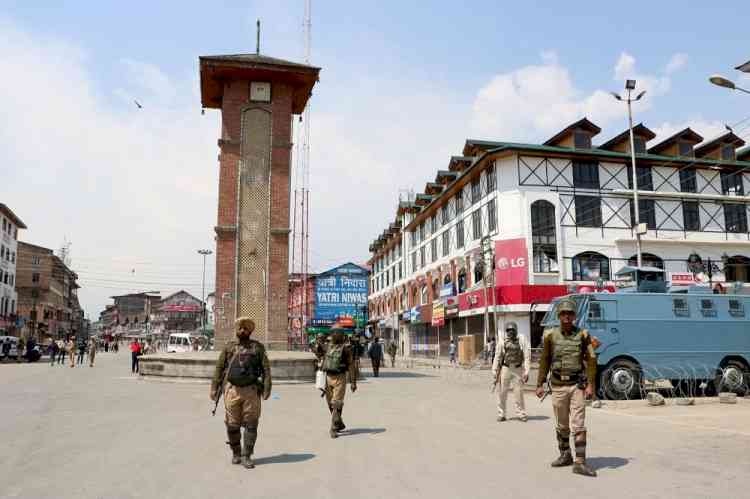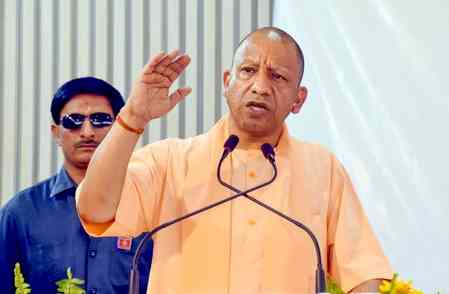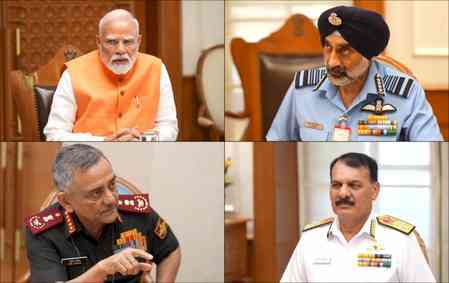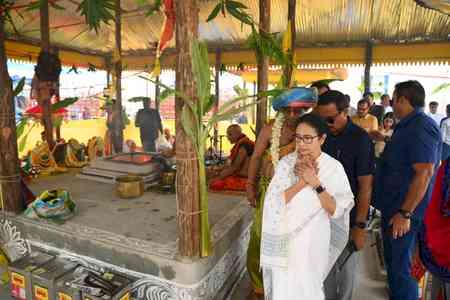Article 370 abrogation: Peace, prosperity replace separatism, sedition in J&K

New Delhi, Dec 5 (IANS) It took 70-years for the Centre to scrap Article 370 -- a temporary provision in Indian Constitution that provided special status to erstwhile J&K State. After its revocation Jammu and Kashmir has witnessed a massive change as peace, prosperity and development have replaced separatism, sedition and Pak sponsored terrorism in the Himalayan region.
Article 370 was included in the Constitution on October 17, 1949. It exempted J&K from the Indian Constitution (except Article 1 and Article 370 itself) and permitted the state to draft its own Constitution. It restricted Parliament's legislative powers in respect of J&K. For extending a central law on subjects included in the Instrument of Accession (IoA) consultation with the state government was needed. But for extending it to other matters, "concurrence" of the state government was mandatory.
Strong political will made a difference
From 1949, many governments were formed in New Delhi and tall leaders headed India. But no one dared to "bite the bullet" and revoke Article 370 as the people who ruled J&K after 1947 had created a notion that if this Article is done away with it would mean Jammu and Kashmir ending up in Pakistan's lap.
After Narendra Modi took over the reins of the country for the first time in 2014 the government led by him started working on the plan to abrogate J&K's so-called special status and to merge the erstwhile princely state with the Union of India completely.
The plan was implemented soon after Bharatiya Janata Party (BJP) won more than 300 Lok Sabha seats in 2019 parliamentary elections and Modi returned to power with a thumping majority. The scrapping of Article 370 became a priority. The task was assigned to Union Home Minister, Amit Shah, who along with his team chalked out a strategy to end J&K's accession debate once for all.
Just within a few months after assuming power for a second consecutive term, Prime Minister Narendra Modi gave his nod to end the controversy once for all.
On August 5, 2019, the Union Home Minister presented a Bill in Rajya Sabha to revoke Article 370 and reorganise Jammu and Kashmir into two union territories, J&K and Ladakh. The Bill was first passed in the Upper House and then in Lok Sabha.
No bridges burnt
Mainstream Kashmiri leaders had claimed that once J&K's special status is done away with, no one will be left in the Himalayan region to lift the Tricolour, and the move would trigger massive civil unrest. But their predictions fell flat as J&K didn't witness a single protest and many people came forward to hold the Tricolour close to their hearts.
After August 5, 2019, a new dawn has broken out in Jammu and Kashmir. People have welcomed the change in status-quo and have joined the process of nation building. All confusions stand cleared. Ones who used to claim that Article 370 is a bridge between New Delhi and J&K and if it's burnt it can have serious repercussions stand exposed.
Separatists left with nothing to sell
After abrogation of J&K special status, separatists backed by Pakistan, who sold dead bodies of Kashmiris for the past 30-years to fight the proxy war of a neighbouring country in J&K, became irrelevant as they were left with nothing to sell. The Article 370 till August 5, 2019, provided a reason to these elements to keep the conflict alive by telling the people that Kashmir's merger with Pakistan and Azadi were possible. It allowed them to keep the accession debate alive. They left no chance to keep Kashmir burning.
The Kashmir-based mainstream politicians used Article 370 as a tool to reap the fruits of power and enjoy privileges that were offered to them as members of the ruling or opposition parties. The politics of these leaders revolved only around J&K's special status. Other than governance they focused on everything, i.e., India-Pakistan relations, agenda of separatists and how the militants were operating. Many ministers in the erstwhile political regimes were of the opinion that peace cannot return to Kashmir till the Government of India holds talks with Pakistan, Hurriyat and the militant commanders. But the Centre's August 5, 2019 decision has paved the way for return of peace and prosperity to the Himalayan region without talking to the people who preached hatred and violence for the past three decades.
Amit Shah shows mirror to politicians
Recently, Union Home Minister Amit Shah, tried to show mirror to the leaders, who have been harping that peace has not returned to J&K even after the abrogation of Article 370.
Shah, during an interaction at the HT Leadership Summit in New Delhi said, "There was Article 370 for the last 75 years. Why was there no peace? If there is a relation between peace and Article 370, was the Article not in place in 1990? It was there in 1990 why there was no peace? Even if we include figures of targeted killings, we are not even close to 10 per cent. This means there is peace.
"I am happy that Prime Minister Narendra Modi abrogated Article 370 from the Constitution on August 5, 2019. Kashmir is at peace now, investment is taking place, tourists are visiting and Jammu and Kashmir is gradually looking to stand united with the rest of the country," the Union Home Minister said.
More than anyone else the Article 370 in Jammu and Kashmir helped a few political families to establish their rule and act as monarchs. It also allowed separatists to survive as they projected J&K's special status as a platform for their so-called "freedom struggle".
For a common Kashmiri it was nothing more than an impediment which kept him deprived of the benefits and the rights which he could have enjoyed during the past 75-years. During the past two years J&K has witnessed massive development in every sphere. The Centre's decision to empower a common Kashmiri has helped him understand his rights and duties towards the country. A common man in Kashmir has become a biggest stakeholder in peace and is making every possible attempt to ensure that violence doesn't return and he lives without any fear of guns, bombs and grenades.


 IANS
IANS 










